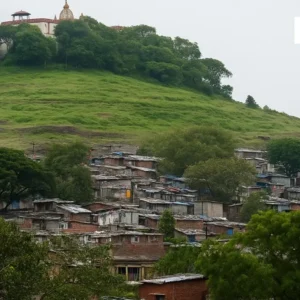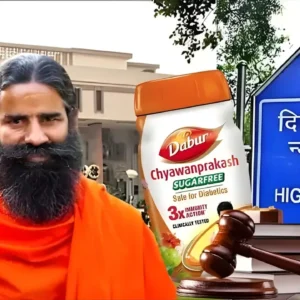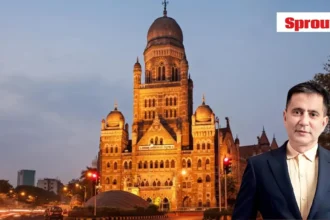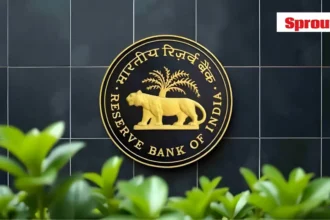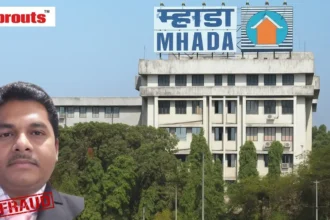Malnutrition Nightmare Near Mumbai: 163 Affected
• Bureaucratic Apathy Fuels Tribal Malnutrition
• Health Crisis on Mumbai’s Doorstep
Unmesh Gujarathi
Sprouts News Exclusive
Contact: +91 9322755098
Sprouts News Exclusive
Contact: +91 9322755098
A shocking malnutrition crisis has gripped Mira-Bhayander near Mumbai, with 163 children affected—9 severely. Tribal hamlets remain neglected, with no official data or action. Sprouts News SIT exposes administrative failure and demands urgent medical and policy intervention.
Despite being on the edge of Mumbai, Mira-Bhayander is grappling with a severe malnutrition crisis. According to official records, 163 children in the region have been identified as malnourished. Of these, nine are categorized as suffering from Severe Acute Malnutrition (SAM), while 152 fall under Moderate Acute Malnutrition (MAM).
Contents
- Malnutrition Nightmare Near Mumbai: 163 Affected
- • Bureaucratic Apathy Fuels Tribal Malnutrition
- • Health Crisis on Mumbai’s Doorstep
- Tribal Hamlets Overlooked: No Records, No Welfare Implementation
- Broken Systems: Tribal Development and Municipal Authorities Fail to Coordinate
- Urgent Medical Response Promised at Bhimsen Joshi Hospital
- Also Read: Rainfall Relief Scam: Fake Farmers, ₹40 Cr Fraud Exposed in Jalna.
- Malnutrition in Urban India: A Hidden Emergency
- Beyond Promises—A Call for Accountability
What’s more alarming is that the Integrated Child Development Services (ICDS) authorities have no data on how many of these children belong to the tribal communities—a glaring gap that reflects a deep-rooted administrative failure. Tribal residents allege that ICDS officers and staff rarely visit remote tribal hamlets and rely entirely on paperwork from their air-conditioned offices, ignoring real ground conditions.

Tribal Hamlets Overlooked: No Records, No Welfare Implementation
The tribal belts of Mira-Bhayander—including Chena, Kajupada, Kashigaon, Mashacha Pada, Ghodbunder, Varsave, and Mira Gaon—remain mired in deprivation and neglect. These areas are supposed to be under continuous health and nutrition monitoring by the ICDS. However, when asked during an official review meeting how many malnourished children are from tribal communities, ICDS officers had no answers.
This lack of data points to systemic indifference. Sprouts News Investigation Team (SIT) discovered that basic information such as birth and death records, nutrition patterns, and general health assessments of tribal children is either missing or outdated. ICDS officials admitted during the inquiry that they were unaware of the tribal demographics among malnourished children—an unacceptable oversight in a region with visible tribal populations.
Broken Systems: Tribal Development and Municipal Authorities Fail to Coordinate
The issue doesn’t stop at nutrition. When Sprouts SIT asked authorities about how many tribal families live on government land, how many homes have legal status, or how many padas have electricity or piped water—officials failed to provide basic answers. Instead of functioning as an interlinked welfare system, the Tribal Welfare Department, ICDS, and Mira-Bhayander Municipal Corporation appear to be working in silos with no functional coordination.
This bureaucratic disconnect means that despite the presence of dedicated schemes, tribal children and their families are not receiving basic entitlements like concrete housing, roads, or access to drinking water. At the review meeting, when confronted, the authorities merely assured “appropriate action in future”—a promise that has historically yielded little.
Urgent Medical Response Promised at Bhimsen Joshi Hospital
Ganesh Jadhav, Child Development Project Officer for Mira-Bhayander Urban, confirmed the malnutrition statistics and assured immediate action. As per his statement, all severely and moderately malnourished children will be referred to Bharat Ratna Pandit Bhimsen Joshi Hospital for urgent medical treatment and nutritional care.
However, the hospital’s Nutritional Rehabilitation Centre (NRC), a key facility for treating severely malnourished children, remains non-functional. In response, a joint meeting of all concerned departments has been scheduled for Tuesday. One key agenda item is the reactivation of the NRC and ensuring regular health check-ups for children twice a year.
Dr. Sambhaji Panpatte, Additional Commissioner of the Mira-Bhayander Municipal Corporation, stated that the administration will push for urgent reimplementation of these child welfare measures.
Also Read: Rainfall Relief Scam: Fake Farmers, ₹40 Cr Fraud Exposed in Jalna.

Malnutrition in Urban India: A Hidden Emergency
This disturbing revelation from Mira-Bhayander raises broader questions about the functioning of urban health and nutrition programs. If such a crisis exists just outside Mumbai—India’s financial capital—it is a chilling reminder of how invisible tribal and marginalized communities become in city planning and public health schemes.
Sprouts News Investigation Team (SIT) urges state-level policymakers to intervene urgently. The crisis in Mira-Bhayander could be the tip of the iceberg, exposing a wider failure in Maharashtra’s approach to tribal health and nutrition. An interdepartmental audit and grassroots-level re-survey of tribal settlements must be prioritized to ensure no child is left behind.
Beyond Promises—A Call for Accountability
The Sprouts News Investigation Team (SIT) concludes that unless immediate accountability is enforced, bureaucratic apathy will continue to deny tribal children their fundamental right to health and nutrition. Data opacity, administrative disinterest, and lack of coordination have collectively created a humanitarian emergency. The Maharashtra government must act decisively—starting with transparency, medical intervention, and grassroots accountability.








